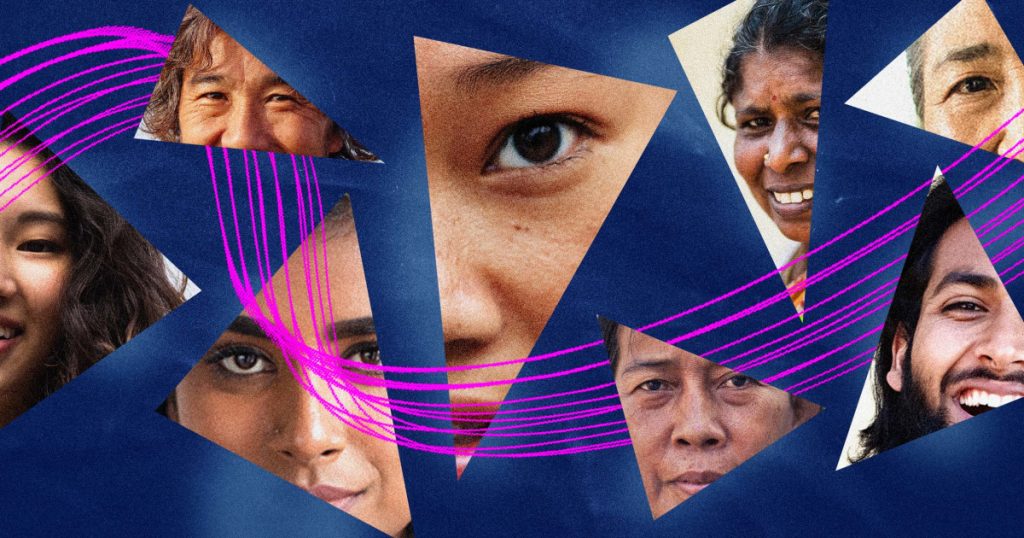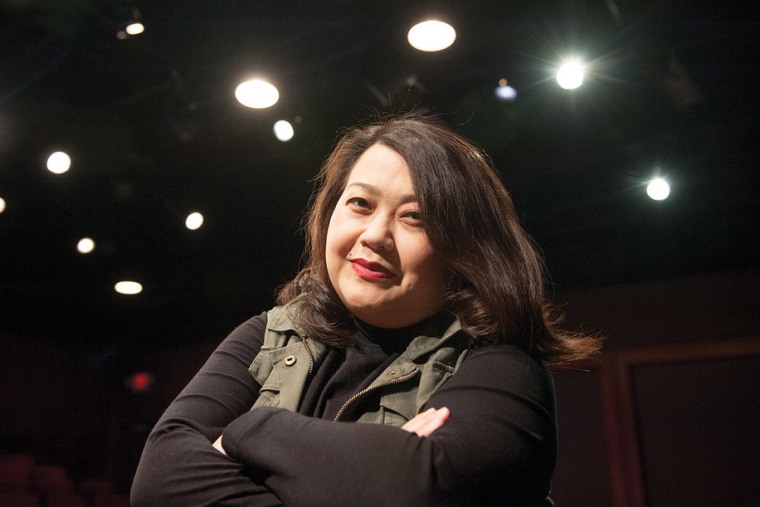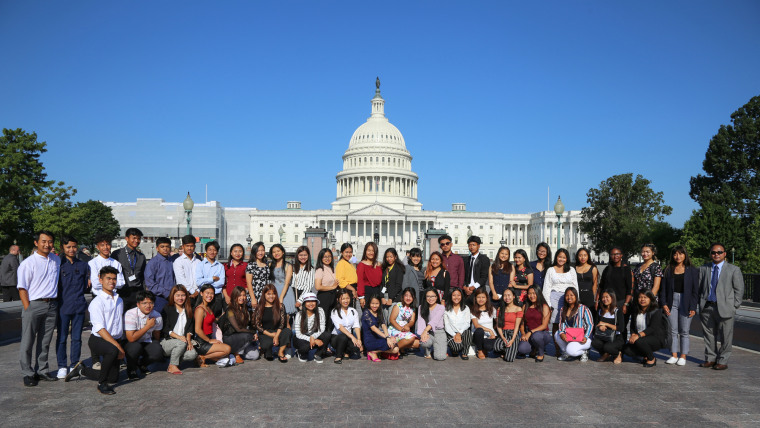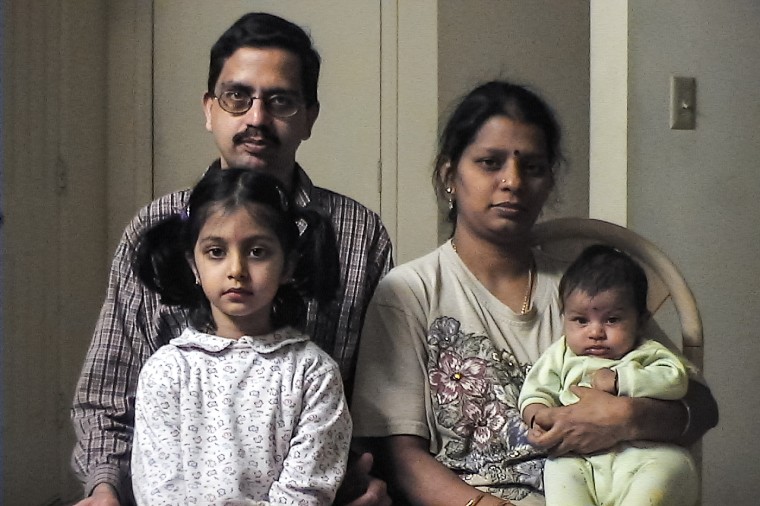
During the height of the pandemic, May Lee-Yang watched in horror as her community members began to die.
In Hmong American neighborhoods like hers, families that lived several generations to a home were the first to lose loved ones. Then, all at once, things accelerated, and tragedy crept closer to home. Her best friend came close to death. She watched from a painful distance as her first family member became ill and died.
Lee-Yang, 44, knew, as did her loved ones, that Covid was ravaging Hmong lives in a way that was starkly different from other groups in her home state of Minnesota.
But the official numbers being released told a very different story. The Minnesota Department of Health, like most other governmental bodies in the country, reported deaths of Hmong people, an ethnic minority group of Southeast Asia, as broadly “Asian American.” And when looked at as a whole, Asian Americans in Minnesota were dying at a rate of 4%. That didn’t seem right to Lee-Yang.

A year later, an independent study revealed Hmongs comprised nearly 50% of all Asian deaths, though they only comprised around 30% of the Asian populace. Had they known that fact earlier, experts say in-language information and personal protective equipment resources could have been allocated from the get-go — Hmong lives could have been saved.
“Many of our communities were overlooked,” Lee-Yang told NBC News. “How things function in this world, you need numbers to prove anything.”
In an era defined by pandemic, violence and growing inequality, the stark differences between Asian American communities have never been more clear. “Asian American” represents dozens of ethnic groups, nationalities, languages and religions; the community’s wealth gap is now the largest in the country. Community leaders agree: Aggregate data isn’t working in everyone’s favor anymore.
Though a common identity has helped build political coalition and power over time, the term “Asian American” is burying subgroups. It’s time, advocates say, to break the data down.
According to federal data, an Asian American has a median household income of $86,000 a year. They likely speak English and, if they’re an immigrant, their journey to the U.S. was probably the result of a skill-based visa. With a college education, they now work in a white-collar job.
It’s a picture that obscures deeper truths about the 18.5 million people who share the umbrella term. Over the last few years, that image has begun to fall away.
It coincides with the community asking itself central questions: What does “Asian American” even mean anymore? Do Indian Americans, who earn a $119,000 median household income, belong in the same statistical category as Burmese Americans, who earn $44,000? Does a first-generation Bangladeshi family have anything in common with a fifth-generation Japanese one?
For decades, advocates have been fighting to disassemble aggregate data to gain a clearer picture of these individual communities. And with states like New York and California beginning to pass legislation mandating it, a picture of what that could look like on a large scale is taking shape.
“If you’re trying to understand the Asian American population, you have to take into account its diversity,” said Karthick Ramakrishnan, founder and co-director of AAPI Data who has spent years pushing for data equity. “When you collect data and all you have is a checkbox that says ‘Asian,’ it does not do justice to the needs of the community.”
Disaggregation is a life-or-death issue, experts say
The term “Asian American” was forged in civil rights spaces of the 1960s, and activists pushed for it to be added to the census so meaningful data could be collected on its communities. But as the immigrant population from the continent grew, more identities were folded in and thorough data collection didn’t always follow.
“The statistics are dominated by the two largest groups, that’s Chinese and Indian,” said Janelle Wong, co-director of AAPI Data. “And those groups have very different experiences from smaller groups.”
Disaggregation and data equity don’t just apply to Asians, Ramakrishnan said, and ethnicity isn’t the only area in which government agencies collect and release broken-down data. The U.S. already disaggregates most population data by characteristics like age and sex. It’s how researchers identified that women in the U.S. make 82 cents for every dollar a man makes or that heart disease is the leading cause of death for men.
On a more granular level, it’s information that could mean the difference between life and death in underserved communities, he said.
In fall 2021, in the hours before Hurricane Ida struck New York City, millions of urban dwellers received warning messages to their phones. Flash flood alerts were blasted in English and Spanish: “This is a dangerous and life-threatening situation,” they said.
When the sun came up the next morning, 18 people were dead. The majority were lower-income Asian American immigrants from Trinidad, Nepal and China who weren’t proficient in either of those two languages.
New York Attorney General Letitia James later acknowledged not all communities were “given the equal chance to survive.”
When it comes to education, language access, food access and health care, not knowing the numbers means resources simply won’t be allocated, experts said, and community organizations and government service providers are forced to operate without direction.
Local governments won’t know if they need to offer their materials in Nepalese or Bhutanese or Bangla in addition to English and Spanish. Translators can’t be hired for hospitals or polling locations, and education initiatives won’t know who’s graduating and who’s not. Health officials won’t know that vaccine information should be made more accessible in Hmong neighborhoods.
The urgency of language access
Elisa Vahnie was one of the earliest Burmese refugees to arrive in the U.S. After a journey out of Myanmar and into India in the 1990s, he eventually found himself in Indianapolis, where he started building a support system for the immigrants who followed him.
Vahnie’s network began to expand, he established the Burmese American Community Institute to help the new arrivals, and he noticed a distinct pattern playing out in his refugee community.

The lowest-income Asian American group, most Burmese immigrants to the U.S. have only been educated through high school or less. English proficiency isn’t common in new arrivals, and immigrant kids in Vahnie’s community struggled to keep up in the grades in which they were placed, he said.
Adults and older teenagers faced an even more daunting decision. They could either focus on getting an education and learning English, or they could start supporting their families by working blue-collar jobs that don’t require speaking.
“Some of them never had a chance to go to primary school,” Vahnie said. “A few of them start to learn English and do a high school equivalency diploma. Many of them just work at the warehouse because they need to support themselves and their family.”
With more community understanding could come more aid, English as a second language teachers, and Burmese speakers in local government, he said. Those things are not always simple to access, especially when Burmese immigrants disappear into larger Asian American narratives.
“We are always looking for resources,” he said. “There is a great deal of need, but there are opportunities and resources out there. It’s a matter of how we put together those resources and direct them to the most in need.”
A social disconnect between ‘Asian American’ groups
Those who are lower-income, brown or in minority ethnic groups say, from the time they were in school, they’ve felt shut out of the “Asian American” umbrella.
Before Richard David, 36, moved to the U.S. from Guyana, he and his family always identified as Indian. Like 40% of the Guyanese population, they could trace their roots back to the subcontinent. He grew up in a small farming community speaking Guyanese Creole, a mix of English, Dutch and languages from India and Africa.

He moved to New York City neighborhood Jamaica, in 1995 when he was 10 and lived in a multifamily home with several others who had recently arrived to the country as well. For the first time in his life, his identity felt like a question mark.
He remembers sitting in a Queens Social Security office with his dad, mulling over the different choices listed under “ethnicity.”
“My dad picked Black because he didn’t know which one to pick,” he said. “‘Asian American’ for him meant Chinese or East Asian, and so he didn’t pick that one. If you asked him the same question in Guyana, he would never have picked Black; he would pick Indian.”
David runs an organization, Indo-Caribbean Alliance, dedicated to helping his community members find identity and face unique community needs. But without a large-scale data breakdown or even a proper count of the population, it’s hard to work with anything other than anecdotes, he said.
“I don’t think Indo Caribbeans are typically thought of when you think of the Asian American umbrella,” David said. “I don’t even think we’re thought of when talking about South Asians. … I don’t know that Indo Caribbeans identify that way either.”
As a brown person who grew up after 9/11, Indian American activist Sruti Suryanarayana, who uses they/them pronouns, said they share the most experiences with people who have been racialized the same way as them. While they still see the Asian American umbrella as a useful political tool, they’ve always felt a little lost within it.
“Since the war on terror began, I think there’s been an interesting intersection between Muslim communities who are not from South Asia and South Asians who are racialized as Muslim,” they said. “That’s another unique sub-identity within ‘Asian American.’”

Kamrul Khan, who was raised in a Bengali neighborhood in Brooklyn, said he’s seen his community time and again be overshadowed in larger narratives. Where he grew up in New York City “felt like Bangladesh,” he said. And he still translates government documents into Bangla for his parents.
“I think culturally, East Asians are as different from South Asians as South Asians are from Caucasians,” he said. “They have very different cultures and needs. I don’t think we’re represented.”
States are beginning to enshrine AAPI disaggregation into law
Several states in the U.S. have signed into law some form of AAPI data disaggregation in the last few years. Some of the laws would require state agencies to offer residents the opportunity to pick from a larger list of ethnicities on official forms.
New York began requiring disaggregation of Asian American and Pacific Islander data by all state agencies beginning in 2021.
In Washington, disaggregation by ethnicity for K-12 public school data was enacted in 2017, with the goal of closing the gap in educational attainment between ethnic groups. The bill specifically called for the further disaggregation of Asian student data by country of origin, Black student data by whether they immigrated here or were born in the U.S., and white student data by Eastern European nationalities.
Similar bills passed in Minnesota in 2016 and Rhode Island in 2017 require disaggregation of the Asian ethnic groups in the state by population.
California’s Department of Fair Employment and Housing mandated disaggregation and release of disaggregated data as early as 2011. The state’s Department of Public Health was the subject of legislation passed in 2016 requiring AAPI disaggregation to better understand the health needs of Asian American and Pacific Islander communities.
“It means that government programs that serve Asians have to take into account particular needs of particular communities,” Ramakrishnan said.
The timely implementation of disaggregation laws can be a struggle of its own, he said, and that’s just the first step. The next is analyzing that data and implementing real, community-based outreaches based on it. Across sectors, that might mean unique things.
“What disaggregated data might look like, say, for educational attainment might look very different from the patterns that you find for language needs,” he said.
How is ‘Asian American’ still salient?
Despite the differences in AAPI communities, data experts agree that there’s one major factor that still ties them together: political interests. Asian Americans are building power as a voting bloc, and everyone is taking notice.
“There is power in numbers,” Wong, of AAPI Data, said. “Despite the fact that diversity is the hallmark of the Asian American community, there’s a tremendous convergence of political interests and shared values on particular issues.”
Those issues include health care, gun laws, the environment and access to reproductive care, she said, all of which Asian American groups share strikingly similar opinions on.
While the disparities between Asian communities may necessitate disaggregation and data equity, Suryanarayana said umbrella terms still have a place.
“Data disaggregation is one step to unpack how that term ‘Asian American’ has been used to homogenize us,” they said. “I still have a lot of fondness for the term Asian American. To me, it indicates a very American analysis of how race, immigration, xenophobia and different forms of violence intersect. And in that, I see a lot of resilience.”
Complete data equity will take time, advocates say, and it might never represent everyone perfectly, but starting the process will make tangible differences in people’s lives.
“The end goal is to make sure that our community members are not disenfranchised because of language barriers and cultural barriers, and consistently othered in a country that is ours,” said Sung Yeon Choimorrow, executive director of the National Asian Pacific American Women’s Forum.
Asian Americans, long tied together in political coalition, can push for this reality together, she said.
“When you say ‘AAPI,’ is it one group, two groups or many groups? The answer is all three of those are true,” Ramakrishnan said. “Disaggregation does not mean disunity.”

 Latest Breaking News Online News Portal
Latest Breaking News Online News Portal




